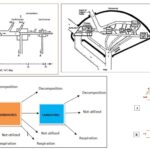What is a codon chart?
What is a codon chart?
Please login to submit an answer.
A codon chart is a reference table that maps each three-nucleotide codon in an mRNA sequence to its corresponding amino acid or a translational signal such as a start or stop instruction
It organizes the 64 possible codons, reflecting the redundancy of the genetic code where most amino acids are encoded by multiple codons
The chart is used to decode the genetic information during the process of translation, linking the nucleotide sequence to the protein’s amino acid sequence
It typically displays the codons arranged by nucleotide position to help locate the correct triplet based on the order of nucleotides in the mRNA
By referring to a codon chart, students and researchers can predict the resulting protein sequence from a given mRNA and understand how mutations may affect protein synthesis
The concept of a codon chart emerged from mid-20th century research that deciphered the genetic code, laying the foundation for modern molecular biology and genetic engineering
It is an essential tool in educational settings, laboratory work, and biotechnological applications for understanding gene expression and protein structure and function
- Share on Facebook
- Share on Twitter
- Share on LinkedIn
Helpful: 0%




